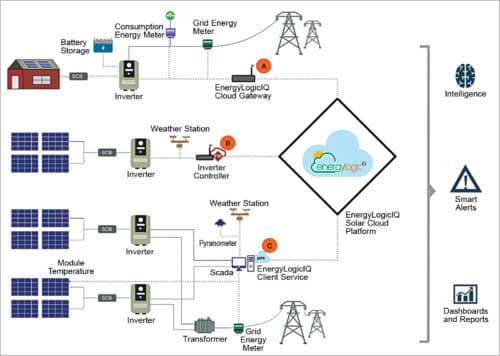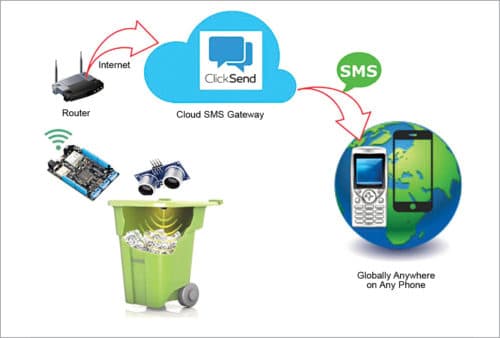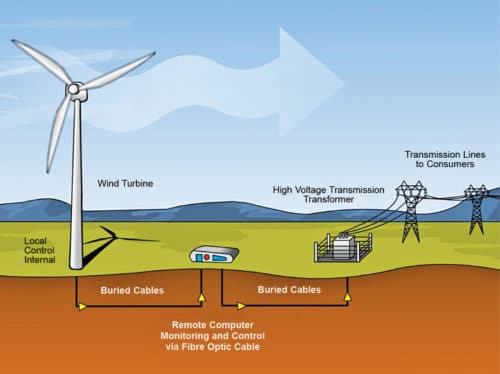Innovative and greener products are the need of the hour for monitoring the environment and tackling climate change. Miniaturised environmental sensors like gas, chemical and biosensors help in remote sensing of the environment.
Technology for environmental monitoring is constantly advancing to improve data collection for regulatory uses. Next-generation compliance utilises new tools, technologies and approaches to strengthen the enforcement of environmental laws. Monitoring technology is becoming smaller, better, cheaper and faster. Promotion and use of such technology can help regulation entities, the government and the public to monitor polluting discharges, environmental conditions and non-compliance more easily. This requires manufacturing and installing the best environmental monitoring systems that utilise the most advanced technologies and data acquisition systems for remote controlling. Longevity, continuity, complexity, budget constraints and uncertainty are important parameters for effective monitoring.
Innovative and greener products are the need of the hour for monitoring the environment and tackling climate change. Miniaturised environmental sensors like gas, chemical and biosensors help in remote sensing of the environment. Integrated environmental-economic information is vital for policymakers. The increasing role of remote sensing devices for on-road screening and environment sensing helps in enforcing emission control policies.

Areas for monitoring environmental safety
Solar energy monitoring. It detects the amount of solar radiation to determine the actual performance of the solar power plant. Real-time analytics are required for scheduling operation and maintenance tasks like cleaning and orientation, demand and supply measurement, net generated and unused electricity measurement, real-time performance ratio, solar yield calculation and active monitoring for faults that are difficult to detect.
The aim of solar energy monitoring is to send immediate notifications in case of any malfunction by monitoring each device of the plant. It is based on the Internet of Things (IoT) and Big Data technologies that offer scalability for centralised monitoring of millions of devices with a lot of computations running at the same time at a single point, regardless of location and technology. Energy meters and other devices send data directly to the cloud via IoT data loggers. These also divert excess electricity generated to specific appliances, enabling intelligent use of solar power.

Weather monitoring
Weather information like temperature, pressure, humidity, soil moisture, wind speed and direction, precipitation amount, UV index, snow depth and solar radiation is gathered simultaneously from a weather monitoring system. Observations are taken automatically whenever required.
Data loggers enable weather sensors to collect data and transmit through mobile or another monitoring device over GPRS/GSM network, making real-time information available at fingertips, irrespective of distance. The observatory can issue a warning signal to the public immediately after poor weather conditions are recognised. Low-power sensors, user configuration through SMSes, over-the-air (OTA) firmware upgrades and secure operations make a weather monitoring system versatile and user-friendly.
Climate monitoring
It integrates satellite observations, ground-based data and forecast models to monitor and forecast changes in the weather and climate. Measurements are taken over time for statistical analysis and identification of mean values, trends and variations. The more the available information, the better the climate can be understood, and the more accurately future conditions can be assessed. It allows monitoring climate-controlled environments in places like museums, labs, etc. It measures and warns of risks arising from rainfall, landslides, floods, storms and so on.
Water quality monitoring
As demand for water grows and population pressure increases, quality of surface water becomes an increasing concern worldwide. Water quality is also affected by environmental change. Researchers and engineers worldwide are trying to develop models capable of predicting the effects of such changes. Various high-resolution, multi-parameter water quality measuring systems have been developed using innovative miniaturised chemical sensing devices. These systems aim to convert contaminated water into clean water that is fit for use. These also monitor the water quality of rivers, lakes, streams and other water bodies using appropriate control systems and probes.
Road monitoring
Ice formation, collected water and other conditions that may affect road safety are monitored by specific stations. Traffic data can be measured using sensors, detectors and other techniques according to their applications, performance and costs. Detectors that help achieve this are pneumatic instruments, inductive loops, magnetometers, piezoelectric sensors, microwave detectors, infrared detectors, ultrasound detectors, passive acoustic array sensors and video detection systems.
Air monitoring
It measures gas concentrations in closed or open areas and the quality of air for breathing using specific measuring systems. An ambient air-quality monitoring system monitors the level of pollutants to improve air quality index (AQI). Monitoring air quality by major public and private bodies is essential to preserve health and assess emission sources.
Waste monitoring
It monitors landfills, proper waste disposal and recycling using sensors. Waste management technology helps track the trash using smart waste collection systems that comprise sensors. Ultrasonic sensors monitor the capacity of dustbins from anywhere, providing detailed analytics to help track waste. This data can reduce fuel emissions by optimising trash pickup schedules. The technology also helps reduce the costs that come with overfilled dumpsters. Image-based trash-can sensors automatically monitor fullness and contents.
The technology optimises driver routes and fuel efficiency through GPS tracking, along with tilt monitoring, which records when a container gets picked up and put down. Smart waste technology helps with managing container inventory, build better routes and even accept orders through automated text messages. It determines which containers need to be serviced, schedules routes and evenly distributes jobs to drivers automatically.
A smart waste container automatically recognises, sorts and compresses waste using a camera, sensors and artificial intelligence (AI). It sorts plastic, paper and glass, based on the shape, colour and material within the container. Thereafter, waste is compressed so that total volume can be up to five times less. Once full, this self-sorting waste bin automatically notifies the trash collection company.
Wind energy monitoring
It includes high-performing monitoring solutions for wind data processing. It continuously monitors the vibration of wind turbines to detect faults at an early stage. Sensors are attached to gearboxes, generators and drive trains to provide real-time data streams that are transmitted to operators who monitor the results on a computer for changes that highlight a potential problem.

Data is easily retrieved via GPRS, the Internet and other methods. All complex mathematical algorithms are performed using cloud computing, rather than expensive sensors. This reduces the condition-monitoring unit to a simpler, more robust piece of equipment. The technology lets a wind farm transmit data collected from every sensor on its turbines, wirelessly or via the Ethernet, back to a single server for data processing. This helps achieve cost savings on sensor equipment and a more scientific approach to data analysis.
Today, wind farms offer owners a whole new way to approach operations and maintenance, thanks to condition monitoring and advanced prognostic systems. Condition monitoring helps them monitor the health of turbine components and related electrical systems. Its purpose is to predict maintenance issues so site operators can conduct repairs and replacements only when needed, to avoid unnecessary and costly up-tower jobs.
Cloud-based software technology with cost-effective hardware can create reliable asset monitoring and predictive maintenance. The technology provides failure rate data of each individual turbine, along with a rolling five-year forecast into the predictive health of each asset at component and major system levels.
Some advanced environmental sensors are optical gas imaging cameras, sensors-on-a-chip technology, unmanned aerial vehicles (UAVs), advanced amplifiers, single-chip relative humidity, diffraction-based, micro sensors for ocean acidification monitoring, IR-based methane sensors for monitoring sub-sea methane releases, fluorescence technology to detect oil leaks at sea and nanostructure sensors for marine monitoring applications.
Design regulations
Health and safety services for hospitals, nursing homes, clinics, laboratories and general industry are developed and administered in strict compliance with current laws and regulations using equipment and techniques approved by Occupational Safety and Health Administration, National Institute of Occupational Safety and Health, National Fire Protection Association and American Industrial Hygiene Association.
Next-generation compliance consists of the following four interconnected components:
- Design regulations and permits to improve compliance and environmental outcomes
- Advanced emission and pollutant detection technology to measure pollutant discharges, environmental conditions and non-compliance
- Information tracking to help co-regulators better manage information, improve effectiveness and transparency
- Data analytics to achieve more widespread compliance







Power can be generated totally free with water for that I required mechanical engineering having knowledge of speed governor for mechanical drive (not electronic speed control)